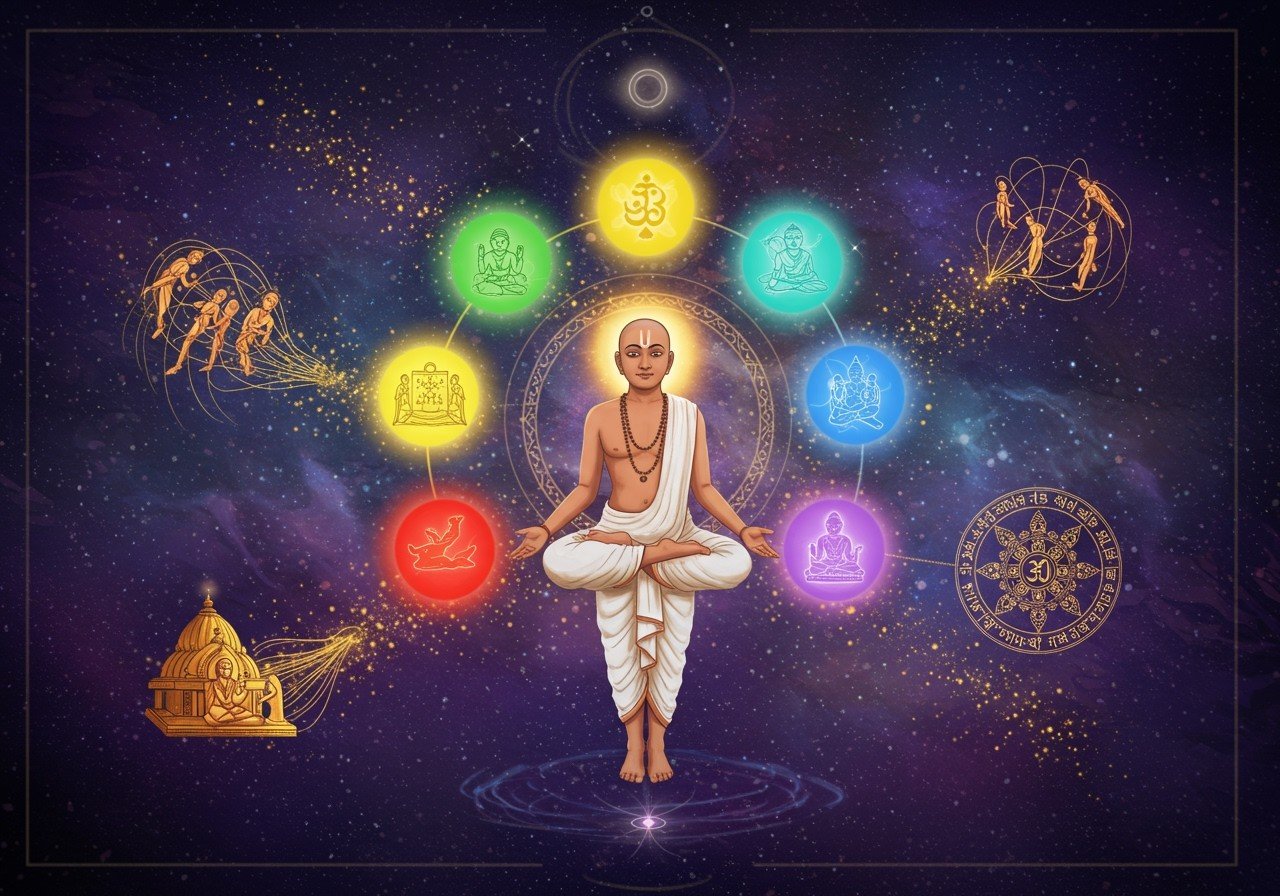
Jainism, among India’s oldest religions, presents a unique and intricate understanding of karma. This blog post offers a clear and comprehensive explanation of this concept, exploring its definitions, types, and impact on followers. Understanding these principles provides valuable insights into the traditions and values of culturally rooted Indians.
Defining Karma in Jainism
What is Karma in Jainism?
In Jainism, karma transcends mere actions; it’s a form of matter binding to the soul. Key terms include:
- Karma: Subtle particles that attach to the soul, influencing its purity and future experiences. These particles are believed to be a physical substance, accumulating as a result of actions, thoughts, and intentions.
- Soul (Jiva): The eternal, pure, and conscious entity, often obscured by the accumulation of karmic particles. The soul’s true nature is revealed through the shedding of this karmic matter.
Karma influences the soul’s purity, accumulating through thoughts, words, and actions. It exists in two primary forms:
- Dravya Karma: The physical substance of karma, viewed as subtle particles that adhere to the soul. This physical aspect of karma directly impacts the soul’s experiences.
- Bhava Karma: The emotional and mental states that attract karmic particles. These inner states contribute to the accumulation of karmic matter.
Karma shapes rebirth and the cycle of transmigration, impacting the soul’s journey towards liberation.
Types of Karma in Jainism
148 Types of Karma
Jainism categorizes karma into a complex system of 148 types, broadly classified into two main groups:
- Ghati Karma (Destructive Karma): These karmas directly affect the soul’s inherent qualities, hindering its true nature. They obscure knowledge, perception, and create delusion and obstacles on the path to liberation.
- Aghati Karma (Non-destructive Karma): These karmas influence the physical body, lifespan, and life circumstances. They shape the experiences of the soul without directly affecting its inherent qualities.
Within these two broad categories, further classifications exist based on specific effects. Some karmas are destructive, hindering the soul’s progress, while others are non-destructive, shaping life experiences without directly harming the soul’s inherent purity.
Mechanism of Karmic Bondage
How Does Karma Bind to the Soul?
The karmic process involves:
- Asrava (Influx): The inflow of karmic particles to the soul due to activities of mind, body, and speech. This process is influenced by passions and attachments.
- Bandha (Bondage): The binding of karmic particles to the soul. This bondage creates a link between the soul and the cycle of rebirth.
- Samvara (Stoppage): The process of stopping the inflow of new karma. This involves controlling passions, cultivating mindfulness, and practicing ethical conduct.
- Nirjara (Shedding): The shedding or elimination of existing karma through spiritual practices. This purification process leads to the liberation of the soul.
Passions like anger, pride, deceit, and greed attract karma. Activities (yoga) contribute to karma accumulation. Key practices include:
- Samvara: Preventing new karma from attaching. This involves cultivating mindfulness, controlling passions, and practicing ethical conduct.
- Nirjara: Shedding accumulated karma. This is achieved through spiritual practices such as meditation, penance, and right conduct.
Meditation, penance, and ethical living help reduce karmic bondage.
Impact of Karma on Rebirth and Liberation
In Jainism, karma dictates the cycle of birth, death, and rebirth (samsara). The ultimate goal is liberation (moksha).
Samsara and Moksha
Samsara is the continuous cycle of life, death, and rebirth, driven by accumulated karma. The soul (jiva) takes on new forms based on its karmic burden.
Moksha is liberation from samsara, achieved by shedding all karmic particles. The liberated soul attains eternal bliss and infinite knowledge.
Ethical and Spiritual Practices
To achieve moksha, one must follow ethical and spiritual practices, including ahimsa (non-violence), satya (truthfulness), asteya (non-stealing), brahmacharya (celibacy or control over sensual pleasures), and aparigraha (non-possessiveness).
Meditation and Penance
Practices like meditation and penance help shed existing karma (nirjara) and prevent new karma from accumulating (samvara). Regular reflection (pratikramana) and maintaining equanimity (samayika) are essential.
How Poojn.in Supports Your Jain Karma Journey
Poojn.in offers essential items to support Jain practitioners in their karmic practices and rituals:
- Dashakarma Kits: We offer comprehensive Dashakarma kits https://www.poojn.incontaining all the necessary items for performing essential Jain rituals and ceremonies, ensuring proper observance according to Jain traditions.
- Pure Ritual Items: Understanding the importance of ahimsa, we offer pure and ethically sourced ritual items https://www.poojn.in that align with Jain values and beliefs about karma.
Embracing the Path to Liberation
Understanding the Jain concept of karma underscores the importance of ethical and spiritual practices. Adhering to principles like non-violence, truthfulness, and non-attachment helps reduce karmic bondage and progress towards moksha. Meditation, penance, and self-reflection further support this journey.
By embracing these teachings, we connect with our rich traditions and cultural heritage. This path fosters personal spiritual growth and contributes to a more harmonious society. Integrating these values into daily life guides us towards liberation from the cycle of rebirth and the attainment of eternal bliss.


